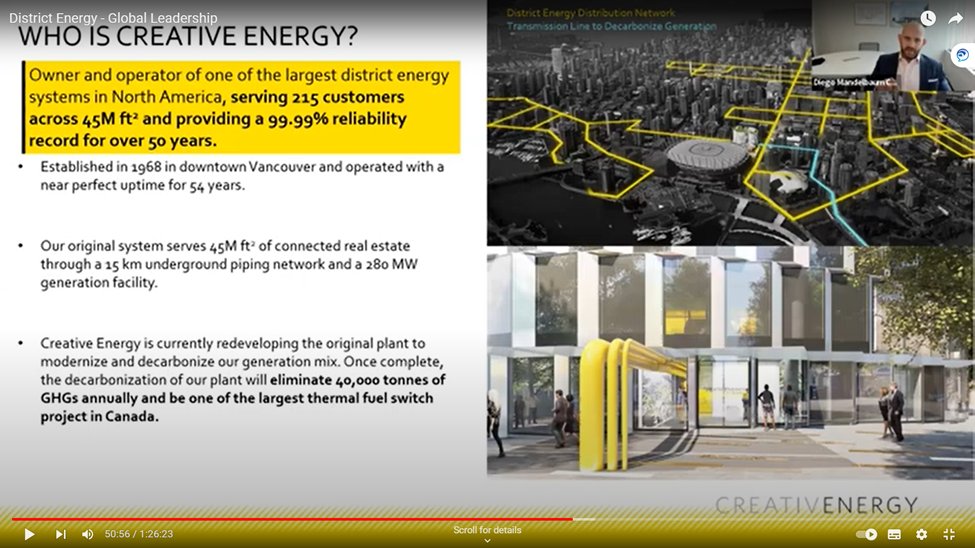
🧵Great presentations and discussion on the approaches to #DistrictEnergy development in Denmark and Canada (mostly ON and BC). TL;DR, they are very different! Thanks @ULIToronto and @BTYGroup 1/8
Denmark responded to the 1970s oil crisis with strong regulation of the heat sector. As Lars Hummelrose of @DBDHdk shows, in some ways it looks like Ontario’s regulation of electricity. 2/8 

This provides certain advantages, including massive thermal networks (99% of Copenhagen buildings are connected), as well as thermal/electrical integration and advanced fuel switching, as illustrated here by Maëlle Caussarieu from the City of Copenhagen. 3/8 

Thermal energy is not regulated in Ontario, so we largely rely on green building standards and private energy developers driven by the business case. Here, Shirin Karoubi of @DEAtcdk compares some of the key differences. 4/8 

Even without regulatory certainty, there is still plenty of district energy activity in Toronto and the GTHA. Here’s a snapshot from Morrigan McGregor of @EnwaveEnergy 5/8 

Large-scale fuel switching is occurring here too, with @_creativenergy leading the way in Vancouver. A new transmission line to their rebuilt Beatty St. energy centre will enable electrification without any service disruption to customers, depicted here by Diego Mandelbaum. 6/8 

In Ontario, and Toronto specifically, the private sector often leads district energy development, but we can help by reducing barriers and enabling access to low carbon energy sources. This is why we mapped the sewer heat resource Diego is pointing to here. 7/8 



We have a long way to go, and plenty to learn from the Danes, but I’m bullish on the future of low carbon district energy in Ontario’s municipalities. 8/8 #TransformTO
• • •
Missing some Tweet in this thread? You can try to
force a refresh






